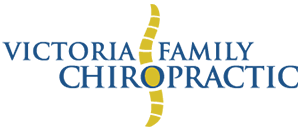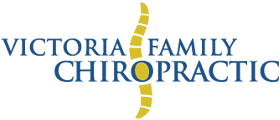Stretch to Health (Part 2)

Staying limber and strong can be done in as little as a minute a day. While yoga is good for strength building and balance, the hour of your time it requires is not necessary for outstanding health. Obviously I believe in the importance of chiropractic, but if you learn how to move and stretch it can greatly diminish the need for treatment. In this article we are going to focus on some important stretches for the upper body.
If you are new to stretching I recommend starting slowly and gently. Stretching is a wonderful way to listen to your body, improve flexibility, increase confidence and energy, and restore balance; however, it can be detrimental if overdone. There are no perfect rules as to how long you should hold or repeat these stretches. Be aware of how your body feels, breathe, and aim to increase your flexibility slowly over time. I recommend starting with one to three repetitions for each or until you feel a good stretch. As always remember to stretch as evenly as possible, making sure you stretch and strengthen both sides of your body. Often we are stronger and more limber on our dominant side, but balancing this out is very beneficial and will keep you safer from injury.
- The Doorway Stretch:
This stretch is terrific for people who sit in front of a computer or have shoulder issues, but also focuses on the pectoral muscles. As an added bonus, it feels awesome. To perform this stretch, lightly grip the doorframe and hold as you push through the doorway (see picture). I recommend keeping your arms straight because this lengthens the biceps, an overused and tight muscle for many. As you become more comfortable with this stretch you can push further by extending your upper back and leaning forward. - Triceps:
The triceps are the muscles behind the biceps and often they are tight. Tight triceps can limit shoulder mobility that can lead to issues such as difficulty reaching overhead and increased risk of injury and pain. To stretch these muscles, bring your arms above your head and bend them so you can hold one elbow. Then bend that arm as much as possible, pulling it evenly behind your body. See if you can get the arm your stretching lined up with to your torso (when viewed from the side) and, as with all stretches, remember to do both sides. - Wall Angels:
This exercise can be challenging but for the majority of people is very beneficial. It’s terrific for those with headaches and chronic neck and shoulder problems. It can be done against a wall (most effective but difficult) or laying flat on your back. Stand with your heels and back touching a bare stretch of wall and bring the back of the wrists, elbows, and shoulders against the wall. Then slide your arms down as far as you can and then as high above your head as you can, as if you were making a snow angel. The goal is to keep your wrists, elbows, and shoulders in contact with the wall throughout the motion without arching your back. If you cannot accomplish the full movement, do not push yourself too far; do enough of the movement to feel the stretch. If you are uncomfortable performing this stretch against the wall, try starting it on the floor, remembering the goal is to keep your whole arm in contact with the floor and to keep your back from arching. Over time you’ll be surprised by your progress. Tip: Retract your head during this exercise by pushing straight back into the wall or floor. - Child Pose:
This stretch is great at simultaneously stretching the upper and lower back. For this stretch, sit on your heels and bend forward, reaching with outstretched arms to touch your palms and ideally rest your forehead in the floor. Tip: Opening your legs will make it easier to bend forward. - Shoulder Stretches:
A) This first shoulder stretch is great for people with rotator cuff issues. Reach one arm behind your back from the top and the other arm behind your back from below and clasp hands. This stretch is a good indicator of shoulder mobility but isn’t easy for most people. If clasping your hands isn’t possible, start off slowly: hold the ends of a hand towel between your hands to lengthen the distance between. Once there, pull down with one hand and when done pull upwards with the other.
B) The second shoulder stretch should be something most people can accomplish. Hold your arm directly out in front of you at shoulder height, and, while keeping it straight, slowly draw it across your torso. To increase this stretch, you can use your other hand to pull your elbow closer to your chest.
I hope you enjoy these. Stay tuned for Part 3 when I’ll discuss proper spinal movement and strengthening.
OFFICE HOURS
Monday
7:30am - 1:00pm
Tuesday
1:00pm - 7:00pm
Wednesday
7:30am - 1:00pm
Thursday
1:00pm - 7:00pm
Friday
7:30am - 1:00pm
Saturday & Sunday
Closed
Victoria Family Chiropractic
3200 Shelbourne St Suite 203
Victoria, BC V8P 5G8




